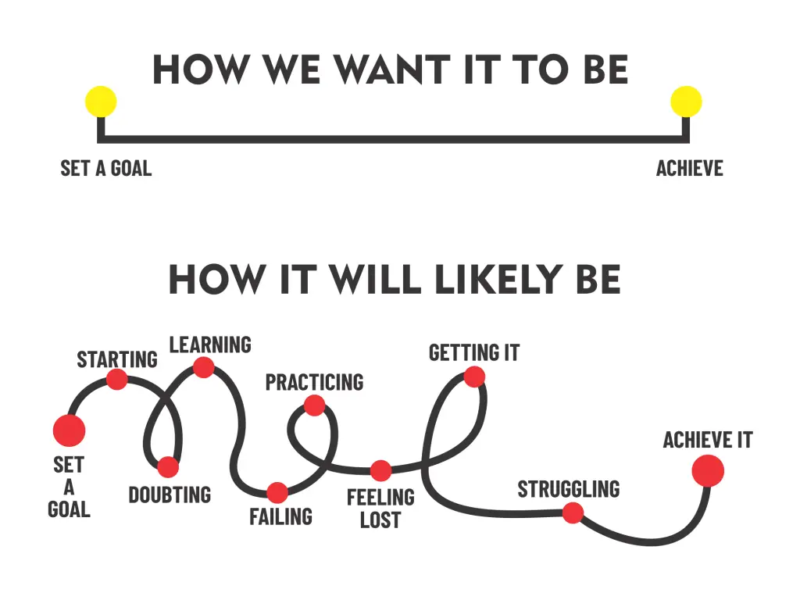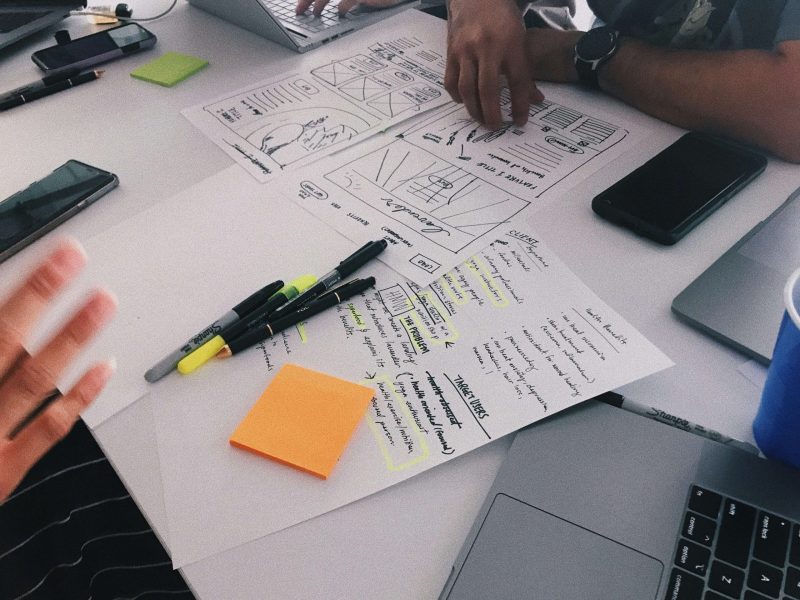Design thinking has risen as one of the most impactful methodologies for driving innovation and problem-solving across industries.
But why does it work so effectively? Beyond its popular tools and frameworks, design thinking addresses deep-seated biases and behaviors that often hamper innovation.
This article delves into the essence of design thinking, exploring why it works, its transformative potential, and how it reshapes both customer experiences and the journeys of innovators themselves.
The Core Challenges of Innovation
Innovation demands more than just great ideas. To be successful, an innovation process must:
- Deliver superior solutions.
- Lower risks and costs of change.
- Garner employee and stakeholder buy-in.
While these goals are clear, the journey to achieve them is fraught with challenges:
- Conventional problem framing: Teams often define problems in obvious ways, leading to equally conventional solutions.
- Uncertainty and fear of failure: Many organizations struggle to balance bold ideas with the risks and costs of experimentation.
- Resistance to change: Entrenched behaviors and biases often stifle creativity and inhibit the adoption of new ideas.
Design thinking tackles these barriers head-on by providing a structured, human-centered approach to innovation.
What Makes Design Thinking Unique?
A “Social Technology”
Design thinking isn’t just a methodology; it’s a social technology. Like Total Quality Management (TQM) revolutionized manufacturing in the 1980s, design thinking combines practical tools with deep human insights to unleash creativity, foster collaboration, and drive meaningful change.
Immersive Customer Research
One of the foundational elements of design thinking is its emphasis on understanding customers deeply. Unlike traditional research, which often relies on surveys and focus groups, design thinking advocates for immersive techniques—putting innovators in the shoes of their customers to identify unarticulated needs.
For example, at the Kingwood Trust in the UK, a design team reframed the problem of “destructive” behavior by adults with autism. Immersing themselves in the lives of residents revealed that these behaviors were not destructive but pleasurable sensory activities. This insight led to innovative solutions that enhanced residents’ quality of life, illustrating the power of empathy-driven design.
A Structured Framework for Creativity
Design thinking is highly structured, which might seem counterintuitive for a creative process. However, this structure helps teams:
- Overcome biases and habitual behaviors.
- Gain confidence in taking risks.
- Align diverse stakeholders around shared goals.
As Kaaren Hanson, a design innovation leader, puts it: “Clear guardrails help us change habits and navigate uncertainty.”
Key Phases of Design Thinking
1. Customer Discovery
At this stage, teams immerse themselves in the customer experience to uncover hidden needs. Techniques like ethnographic research and journey mapping provide the raw material for deeper insights. Tools like the Gallery Walk—where key data is displayed and collaboratively analyzed—ensure that teams identify patterns and challenge their own biases.
Case Study: Monash Health, Australia
By mapping the journey of a mental health patient, Tom, Monash Health uncovered inefficiencies in their treatment process. Workshops focusing on “what could be” rather than “what is” led to redesigned care pathways, reducing relapse rates by 60%.
2. Idea Generation
In this phase, design thinking encourages the emergence of fresh ideas by fostering collaborative dialogues. Instead of negotiating compromises, teams build on diverse perspectives to identify innovative solutions.
Case Study: Children’s Health System of Texas
To address asthma management, the organization brought together hospital staff, community partners, and families. Collaborative brainstorming sessions resulted in a comprehensive wellness ecosystem that extended beyond medical interventions, involving housing authorities, schools, and local organizations.
3. Testing and Prototyping
Prototyping in design thinking is not about refining a near-finished product but about creating rough artifacts to test ideas early. This iterative process:
- Reduces risks by identifying flaws early.
- Encourages stakeholder involvement.
- Builds confidence in new solutions.
Case Study: Kaiser Permanente
To redesign medical office layouts, Kaiser used simple bedsheet mockups to simulate spaces. This approach allowed rapid iteration and alignment before investing in construction.
Why It Works: Addressing Human Biases
Design thinking directly counters biases that hinder innovation:
- Bias toward the status quo: Immersion and reframing challenge preconceived notions.
- Fear of failure: Structured processes and low-risk prototypes foster psychological safety.
- Overwhelmed by data: Tools like sense-making and alignment workshops help teams synthesize information effectively.
The Transformative Power of Design Thinking
Design thinking’s impact extends beyond the development of products and services. It reshapes organizational culture by:
- Encouraging collaboration: Diverse teams align around shared goals.
- Fostering a growth mindset: Iterative experimentation reduces fear of failure.
- Building commitment: Inclusive processes garner broad support for change.
Practical Tips for Adopting Design Thinking
- Start small: Pilot design thinking on a specific project to demonstrate its value.
- Invest in training: Equip teams with the tools and mindset needed for success.
- Foster leadership support: Leaders must champion the approach and create an environment that embraces experimentation.
Conclusion
The framework works because it combines the best of human insight with structured tools to drive innovation.
By addressing biases, fostering collaboration, and emphasizing empathy, it transforms not only the solutions organizations create but also the people and cultures behind them. As a social technology, its potential to reshape industries is unparalleled, making it a cornerstone of modern innovation strategies.
References
- Liedtka, J. (2018). “Why Design Thinking Works.” Harvard Business Review. Retrieved from HBR.
- Brown, T. (2009). Change by Design. Harper Business.
- Juan Fernando Pacheco “What is Design Thinking?“.


